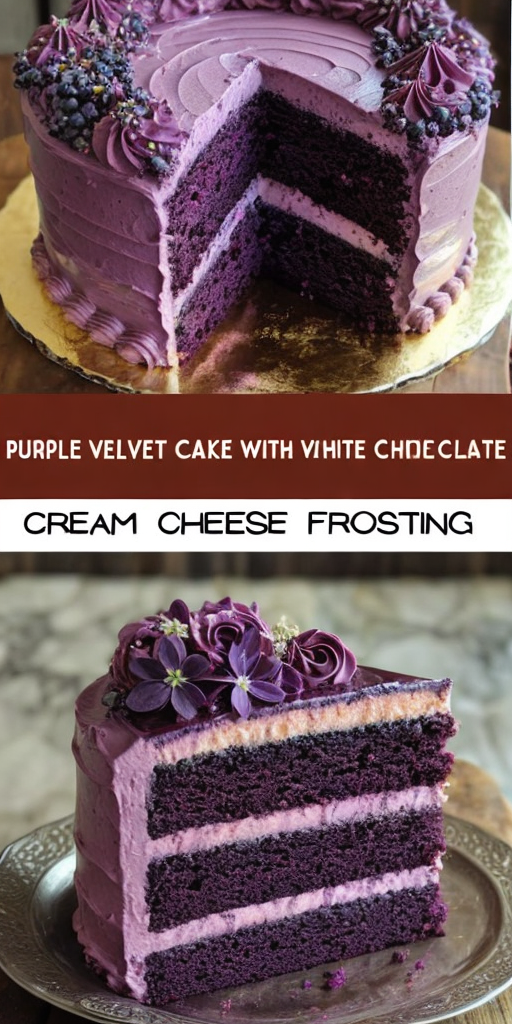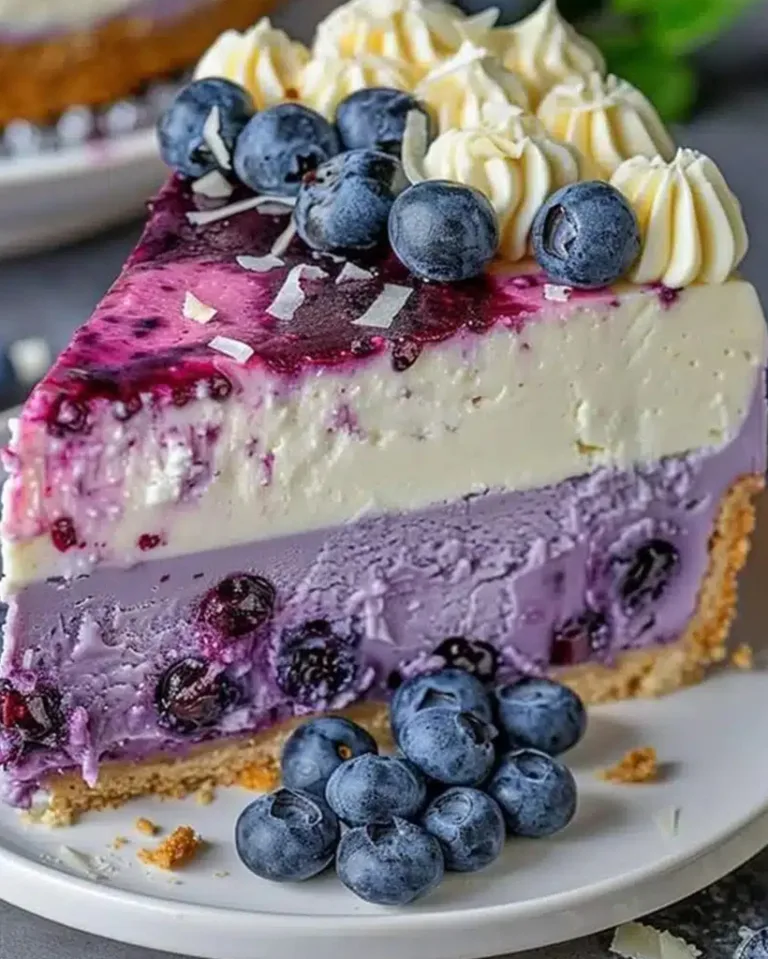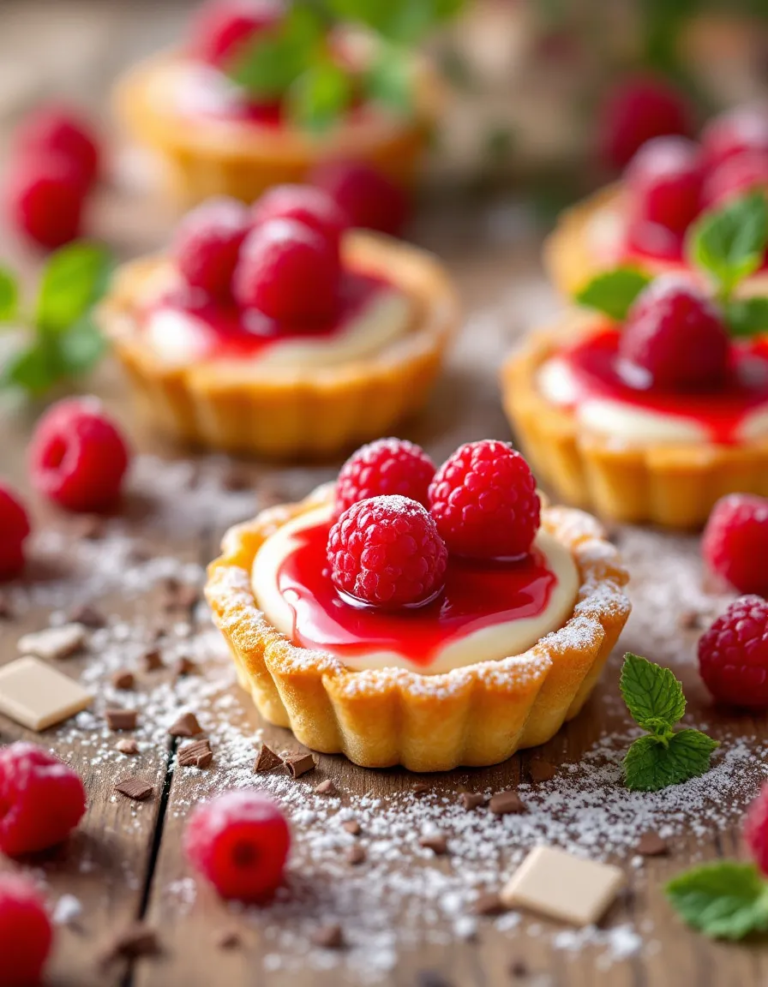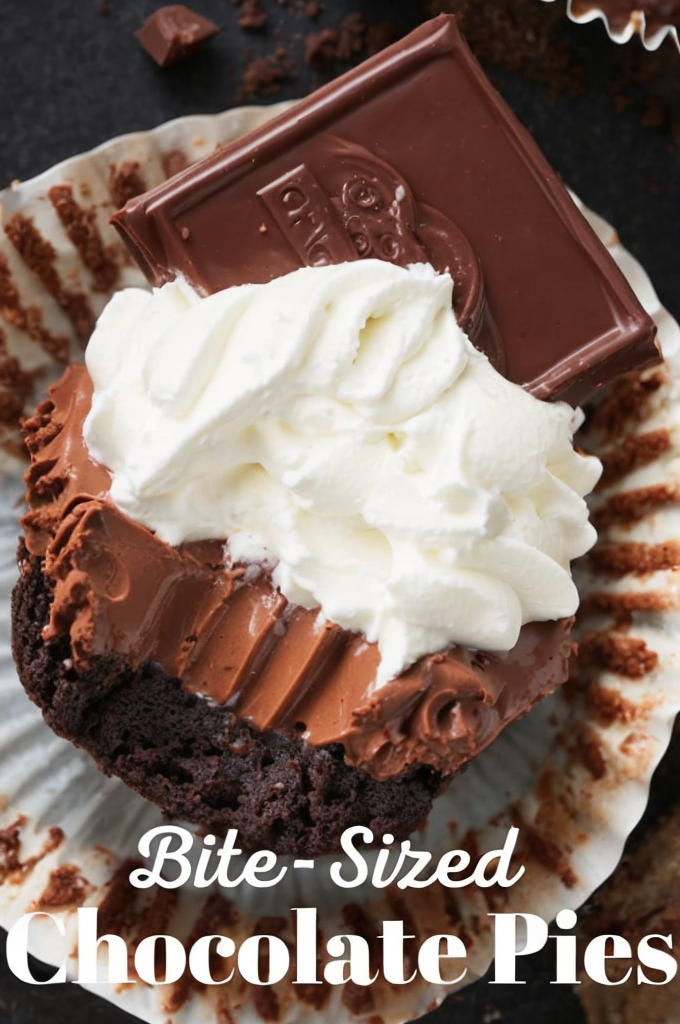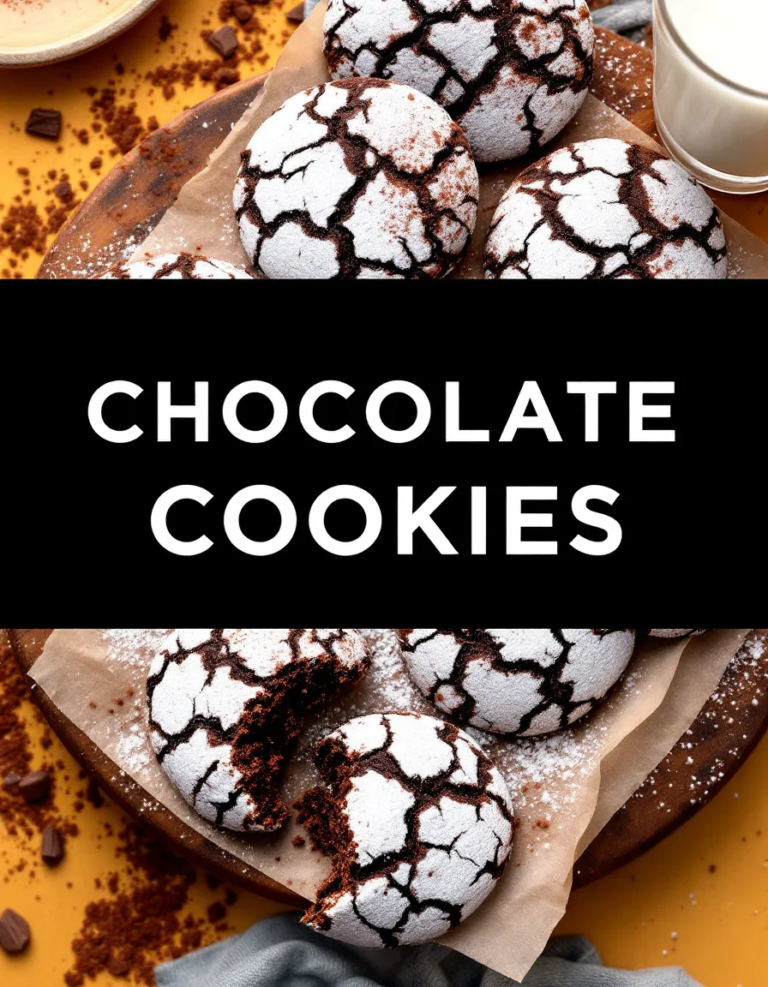Ultimate Brown Butter Apple Cake – Family Favorite Recipe
Ultimate Brown Butter Apple Cake – A Family Favorite Recipe
Imagine your kitchen filled with the cozy, toasty aroma of a freshly baked Ultimate Brown Butter Apple Cake. This family favorite recipe combines the nutty richness of brown butter with the soft, sweet allure of apples to create a dessert that’s perfect for any occasion. Easy enough for beginners yet deliciously complex in flavor, this cake will quickly become a staple in your baking rotation. The golden-brown crust encases a moist center spiced with cinnamon and nutmeg, offering a comforting bite that pairs perfectly with an afternoon coffee or a festive holiday meal.
Quick Recipe Highlights
- Flavor Profile: Enjoy a warm, buttery base with sweet, delicate apple tones accented by a hint of cinnamon spice.
- Texture: Expect a soft and moist interior with a satisfyingly crisp crust.
- Aroma: Experience the inviting fragrance of brown butter mingled with fresh apples and spices.
- Visual Appeal: The cake presents a rustic charm with its golden top and tender apple pieces poking through.
- Skill Level Needed: Perfect for intermediate bakers who are comfortable browning butter and baking cakes.
- Special Equipment: Requires a mixer, a cake pan, and a stove for browning butter.
Recipe Overview
- Difficulty Level: This is a medium-difficulty recipe, mainly due to the requirement of browning the butter without burning it, demanding a careful watch and attention to detail.
- Category: A delightful dessert that suits afternoon tea, potluck gatherings, or as a sweet end to any meal.
- Cuisine: Rooted in American home baking traditions with a modern twist using browned butter for depth in flavor.
- Cost: Inexpensive to moderate, due to the affordable nature of the main ingredients, primarily apples and butter.
- Season: Best enjoyed in autumn when apples are fresh, but can be savored year-round with stored or imported fruits.
- Occasion: Perfect for family gatherings, holidays, or any occasion that calls for home-baked comfort.
Why You’ll Love This Recipe
First and foremost, the taste and texture of the Ultimate Brown Butter Apple Cake captivate the senses. Each bite delivers a harmonious blend of sweet and nutty flavors, courtesy of carefully browned butter and luscious apples. The crust’s golden crispiness transitions into a soft, moist interior that refreshes with hints of cinnamon and nutmeg—truly a cake that’s complete in every sense of indulgence.
This recipe is also incredibly convenient for those with a busy schedule. There’s minimal prep involved, and once the batter is ready, the oven does the work. The batter comes together swiftly, and the recipe’s inherent simplicity ensures that minimal clean-up is required afterward. For those moments when inspiration strikes for a last-minute dessert, this cake is a reliable go-to.
From a nutritional perspective, the cake’s use of natural apples provides vital vitamins and dietary fibers, offering a slightly health-conscious angle in the indulgence sector. While dessert might not be synonymous with health in most minds, choosing fresh ingredients elevates this cake beyond typical bakery fare.
Socially, this cake is a show-stopper, ideal for impressing guests or contributing to a potluck event. Its flavors hit the sweet spot for a diverse crowd, making it a beloved choice across generations and varied tastes. It displays well on any dessert table with its homely, inviting appearance that encourages sharing and conversation.
Lastly, this recipe’s cost-effectiveness ensures that a delicious, high-quality dessert doesn’t come at a high price. Incorporating seasonal fruit helps, as does the inherent simplicity of its primary ingredients. All in all, this cake brings gourmet charm without breaking the bank or your time budget.
Historical Background and Cultural Significance
The tradition of melding apples with baked goods stretches back centuries, with apples being a staple ingredient in many cuisines worldwide due to their availability and longevity. The apple cake, in its various forms, finds its roots in European peasant kitchens where frugality dictated creativity and reliance on abundant local produce.
Over time, the recipe evolved as it traversed different regions, each adding its unique touch. In America, the apple cake tradition dovetailed with the invention of brown butter—an adaptation that came about with a growing appreciation for the nuanced, complex flavors that browned dairy fat imparts. This adaptation enriched the traditional apple cake, offering an added layer of sophistication.
In American culinary landscapes, apple cakes often appear in community cookbooks, showcasing variations tailored by generations who adapted the basic formula to suit their tastes. Brown butter apple cake thus stands as a testament to the ever-evolving nature of regional food traditions—a modern innovation on a time-honored classic.
Regional variations further highlight the recipe’s flexibility, from French tarte tatin derivatives to the Pennsylvania Dutch’s apple-custard combinations. These variants underscore an apple cake’s ability to adapt, celebrate, and reflect local flavors, making it truly universal and delightful.
Ingredient Deep Dive
Apples are the undeniable stars of this recipe. They carry cultural importance, symbolizing knowledge and abundance in various traditions. Specifically, in this cake, apples provide flavor, moisture, and natural sweetness while adding invaluable nutrients like dietary fiber and Vitamin C. When selecting apples for this recipe, choose firm, slightly tart varieties like Granny Smith or Honeycrisp for a balanced flavor profile, complemented by the cake’s sweetness.
Brown butter is the unsung hero here, imparting a nutty, toasty complexity that transforms the cake from ordinary to extraordinary. Nut butter is lauded for its sophistication in elevating simple ingredients, offering a deep richness while still keeping the recipe accessible. The process involves heating butter until the milk solids caramelize and develop a signature nutty aroma. It’s important to monitor the butter closely to prevent burning, achieving that perfect amber hue.
Storage and substitution of ingredients are straightforward. Apples can be stored in a cool, dry place or refrigerated if not used immediately. Brown butter can be made ahead and kept refrigerated, though bringing it to room temperature before mixing is advised. Substitution options allow flexibility: pears or stone fruits might replace apples, each providing a unique twist, while ghee offers a quicker, though slightly less intensely flavored, substitute for brown butter.
Common Mistakes to Avoid
- Overcooking the brown butter can lead to a bitter taste. Remove it from the heat once it reaches an amber color and emits a nutty aroma.
- Choosing overly sweet apples may result in a cloyingly sweet cake. Balance sweetness with a tart variety.
- Underestimating the importance of sifting dry ingredients can yield a denser crumb. Be sure to sift for proper texture.
- Skipping the cooling step before slicing can cause the cake to crumble. Allow it to cool completely for clean, neat slices.
- Using too large or too small a pan can alter baking time or cause the cake to cook unevenly.
- Incorrectly measuring flour by packing too tightly results in dryness; fluff and spoon flour into your measuring cup instead.
- Not preheating the oven can affect the cake’s rise and texture consistency.
- Opening the oven door too frequently during baking may cause the cake to deflate.
- Allowing batter to sit too long before baking may result in less leavening action and uneven texture.
- Ignoring the importance of room temperature eggs can lead to poor batter integration and consistency.
Essential Techniques
Browning butter is key to this cake’s depth of flavor. The technique involves heating unsalted butter over medium heat until it melts, foams, and turns a deep amber color. Mastering this ensures the cake has a rich, nutty taste that supports its fruitiness. The process requires constant stirring and vigilant monitoring to avoid burning.
Creaming butter and sugar correctly is another vital technique. Doing this until the mixture is pale and fluffy creates an ideal base for integrating the dry ingredients, ensuring a tender cake. To master this, use room temperature butter and beat it with the sugar until the texture resembles smooth frosting, usually about 3–5 minutes with an electric mixer.
Judging doneness accurately is crucial. Use a toothpick test; if it emerges mostly clean with a few crumbs, the cake is ready. Overlooked, subtle visual cues such as the edges pulling slightly away from the pan also indicate completion.
Pro Tips for Perfect Ultimate Brown Butter Apple Cake
Ensure your brown butter is cooled before incorporating it into the batter to prevent curdling or uneven mixing. Cooling develops flavor further, allowing the nutty notes to bloom and integrate throughout the cake.
For the most flavorful cake, use a combination of apple varieties for a balance of tart and sweet. This not only enhances taste but also adds textural layers to each slice.
Toast the spices lightly before adding them to the batter for a deeper, more robust flavor profile. This small step can dramatically enhance the overall aromatic dimension of the cake.
Fold the apple chunks gently into the batter to avoid breaking them down too much, preserving delightful bursts of fresh apple within the cake.
To keep the cake moist, consider adding a small amount of apple sauce to the batter. It intensifies the apple flavor and ensures the cake retains its luscious texture even days after baking.
Invest in a high-quality pan, preferably non-stick, to ensure even cooking and easy release of your cake, preventing any heartbreak of sticking or uneven edges.
Using parchment paper at the bottom of the cake pan can guarantee ease of removal, maintaining the cake’s intended shape and presentation.
Variations and Adaptations
For those who love exploring regional variations, consider integrating spices like ginger or cardamom for a slightly exotic twist, reminiscent of Indian or Middle Eastern culinary influences.
To adapt this recipe seasonally, swap out apples for summer peaches or winter pears, adjusting spices accordingly to reflect seasonal flavor profiles. This practice keeps the recipe fresh and exciting all year round.
Dietary modifications such as a gluten-free version can be accomplished by using a well-balanced gluten-free flour blend, ensuring no compromise on the cake’s signature texture.
For a different flavor exploration, add a splash of vanilla extract or almond essence. These can enhance the natural flavors of the apples and brown butter, offering a nuanced depth that elevates the entire cake.
If a lighter texture appeals to your palate, including whipped egg whites folded gently into the batter introduces airiness, providing a delightful contrast to the cake’s densely flavorful profile.
In terms of presentation, consider garnishing with a dusting of powdered sugar or a drizzle of caramel glaze for an alluring finish. It adds visual appeal and a touch of sweetness that complements the cake’s natural flavors beautifully.
Serving and Presentation Guide
Serve this cake ideally on a rustic wooden platter to accentuate its homely, rustic nature. Pair the slice with a dollop of freshly whipped cream or a scoop of vanilla ice cream for added indulgence, enhancing the cake’s warm, buttery apple notes.
Garnish with a sprinkle of cinnamon or toasted nuts to add contrast and a touch of sophistication, highlighting the cake’s rich, autumnal flavors.
Including a side of warm caramel sauce offers an irresistible dip or drizzle, marrying perfectly with each slice’s spiced sweetness.
For a modern, trendy presentation, consider cutting the cake into thin slices and plating it vertically, arranged like a domino effect, allowing guests to appreciate its layers and texture from multiple angles.
Serve at room temperature, as the flavors fully develop when the cake isn’t too chilled or warm, ensuring the experience is rich and heartwarming.
When portioning, aim for modest slices; the cake’s richness means a little goes a long way, allowing everyone to savor the complex interplay of flavors without feeling overwhelmed.
Wine and Beverage Pairing
For wine enthusiasts, a chilled glass of semi-sweet Riesling or a sparkling Prosecco pairs excellently with this cake. The wine complements the dessert’s sweetness while adding a refreshing contrast.
In non-alcoholic options, consider a mug of spiced chai tea or apple cider. The warmth and spicy undertones harmonize beautifully with the cake’s buttery apple center.
Coffee, too, is a delightful companion, especially a strong cup of dark roast that cuts through the cake’s richness while adding a flavorful boldness to every bite.
Maintain a slight chill in non-alcoholic beverages, not too cold to dampen the cake’s flavor but cool enough to offer a refreshing counterpoint.
For a savory counterbalance, a cheese platter featuring sharp cheddar or gouda alongside a slice of brown butter apple cake can offer a delightful culinary experience.
Storage and Shelf Life
Store the brown butter apple cake in an airtight container at room temperature for up to three days. This method maintains its natural moisture and keeps the cake fresh.
For longer storage, refrigerate wrapped slices individually to retain moisture and texture but allow them to return to room temperature before serving to ensure best flavor and mouthfeel.
Avoid storing the cake in a humid environment, as excess moisture can affect texture and potentially lead to spoilage.
Recognize spoilage signs, such as any off-putting smell or noticeable mold, and discard any affected portions immediately.
A gentle reheat in a low oven or microwave revitalizes the cake’s warmth and semi-freshness if serving after refrigeration, while freezing is best done with tightly wrapped individual slices, which hold up well and prevent drying out.
- Texture issues: Make sure all ingredients, particularly butter and eggs, are at room temperature to encourage even mixing and a consistent crumb texture.
- Flavor balance: Adjust sweetness by using a blend of apple varieties and verify the quantity of sugar aligns with your personal taste preferences.
- Temperature problems: Calibrate your oven to avoid uneven cooking, and ensure the internal cake temperature reads around 200°F for a perfect bake.
- Equipment challenges: Use a high-quality non-stick cake pan for even heat distribution and ease of cake removal.
- Ingredient substitutions: Carefully choose alternatives, particularly apples and butter replacements, ensuring none alter the cake’s integrity adversely.
- Timing concerns: Rely on visual and sensory cues, such as the cake’s aroma and organized crumb, to verify doneness beyond simple time observations.
Recipe Success Stories
Community feedback often highlights the cake’s versatility as a celebratory treat, with countless stories involving this cake starring at birthdays, reunions, and holiday tables.
Variations have included adding walnuts or raisins for texture and additional flavor, with positive reception from many who delight in the added complexity these ingredients provide.
Adaptation stories abound with users sharing how they integrate locally available fruits or substitute gluten-free flours without sacrificing taste or texture, proving the cake’s inherent adaptability across different dietary needs.
Readers continually suggest pairing techniques—like serving with homemade maple syrup—demonstrating the myriad ways the cake can be enjoyed beyond its initial conception.
Photography tips from enthusiasts highlight the cake’s visual appeal, emphasizing lighting techniques that accentuate its rustic charm and delectable appearance, enhancing its engagement across social platforms.
Frequently Asked Questions
Can I use a different type of fruit instead of apples?
Yes, you can substitute apples with fruits like pears or peaches. Their flavors blend well with brown butter, and adjusting the spices accordingly will ensure the cake remains balanced and delicious.
Is it possible to make this cake dairy-free?
Absolutely! Substitute the butter with a dairy-free alternative suitable for browning, such as plant-based margarine or ghee. Be mindful as each offers a different depth of flavor.
How can I adapt this recipe for high-altitude baking?
Adjustments may be necessary for baking at high altitude. Consider reducing leavening agents slightly and adding an extra spoonful or two of liquid to maintain the desired texture and rise.
Can this cake be made ahead of time?
Yes, it can be prepared up to two days in advance. Store covered at room temperature, or refrigerate to maintain its freshness; be sure to return to room temperature before serving for the best flavor.
What’s the best way to reheat the cake?
Gently reheat individual slices in a microwave or oven until slightly warm. This revives the cake’s rich, buttery notes and complements its moist texture beautifully.
Can I freeze the cake?
Yes, freezing is an excellent option! Wrap individual slices tightly to prevent freezer burn, and thaw fully before serving to retain the cake’s intended moist texture and flavor.
What flour works best in this recipe?
All-purpose flour is recommended for achieving the best texture balance. For alternative flours, ensure they’re finely milled to prevent any gritty texture in the finished cake.
What if I only have salted butter available?
Salted butter can be used but adjust additional salt in the recipe accordingly to maintain a balanced flavor profile. Also, consider the butter’s saltiness before browning.
Do I need to use a specific type of apple?
While using a mix of tart and sweet apples enhances flavor complexity, choose firm apples to prevent them from breaking down too much during baking, regardless of the type.
How do I fix a cake that sinks in the middle?
A sinking cake often results from underbaking or too much leavening. Ensure accurate measurement of ingredients, proper oven calibration, and a complete bake for future attempts.
Additional Resources
Explore related recipes like traditional apple pies with detailed crust techniques or spiced cakes that prompt similar flavor profiles, extending your baking repertoire.
Technique guides highlighting the art of butter browning or apple selection can deepen your understanding and enhance your result consistency.
Investigate ingredient information resources to guide your selections, ensuring freshness and quality, whether choosing apples, butters, or substitutes.
Equipment recommendations covering essential tools like quality non-stick pans and effective batter mixers contribute to repeatable success in baking.
Seasonal variations within different recipes, adjusting for the freshest available produce, help maintain an engaging and innovative dessert table year-round.
Join the Conversation
Share your creations on social media using hashtags for increased community engagement, allowing others to see the beauty and excitement of your baking endeavors.
Photography tips abound for those interested in capturing their cakes aesthetically, emphasizing lighting and composition to showcase your culinary craftsmanship best.
Recipe reviews invite honest feedback and sharing within the community, fostering a platform of tips, adjustments, and variations that empower other bakers in their journeys.
Engage in community challenges, adapting the recipe with a personal twist or combining it with other recipes to reflect seasonal themes or dietary needs uniquely.
Explore reader suggestions for innovative adaptations or enhancements, recognizing the dynamic nature of preferred flavors across cultures and tastes.


